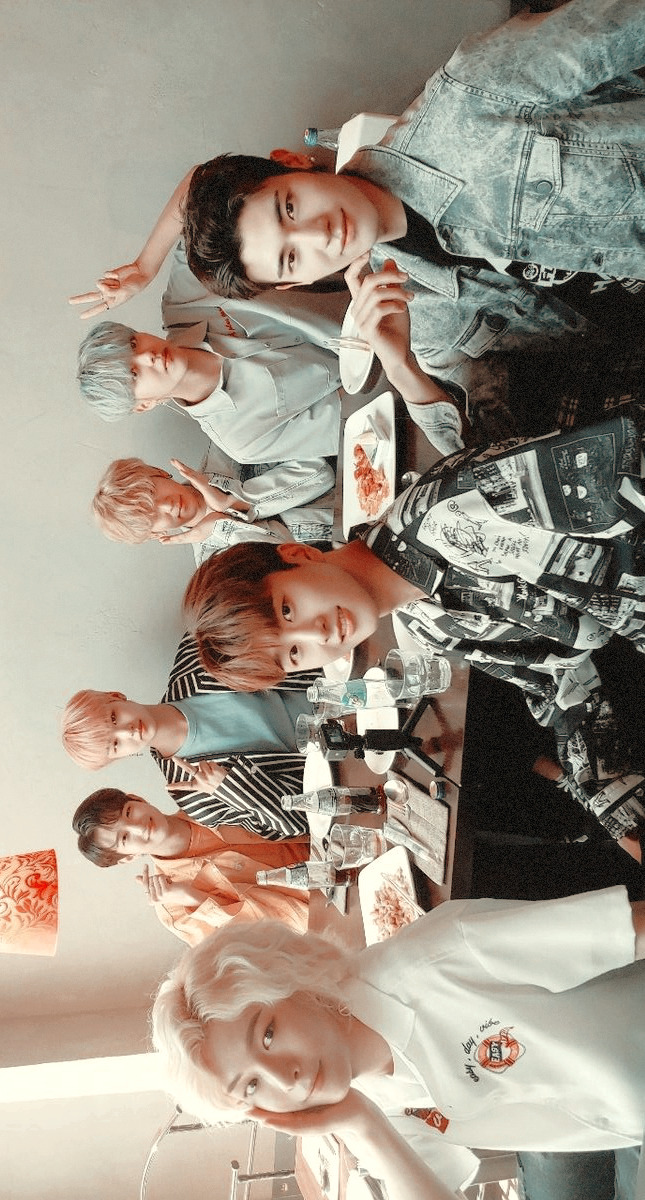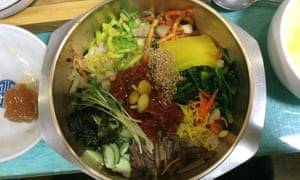#kang seungchan wallpaper
Explore tagged Tumblr posts
Text






newkidd ot7 lockscreens!! please like or reblog if you save it!! 🌿
#newkidd#newkidd lockscreen#newkidd wallpaper#newkidd wallpapers#newkidd lockscreens#ji hansol lockscreen#ji hansol wallpaper#yunmin lockscreen#yunmin wallpaper#woochul lockscreen#woochul wallpaper#jinkwon lockscreen#jinkwon wallpaper#choi jiann lockscreen#choi jiann wallpaper#kang seungchan lockscreen#kang seungchan wallpaper#hwi lockscreen#hwi wallpaper#kang seungchan#choi jiann#ji hansol#kim jinkwon#yoon min#jo mingyu#shin woochul#new kidd#new kidd lockscreen#new kidd wallpaper#new kidd wallpapers
37 notes
·
View notes
Text
A foodie tour of South Korea
With the Winter Olympics shining a spotlight on this hi-tech country, a new culinary trip introduces visitors to zingy rice dishes and the worlds best bibimbap all with a pleasingly messy disregard for formality

A foodie tour of South Korea
South Korea holidays
A foodie tour of South Korea
With the Winter Olympics shining a spotlight on this hi-tech country, a new culinary trip introduces visitors to zingy rice dishes and the world’s best bibimbap – all with a pleasingly messy disregard for formality
Liz Boulter
Fri 9 Feb 2018 01.30 EST
Share on Facebook
Share on Twitter
Share via Email
View more sharing options
Share on LinkedIn
Share on Pinterest
Share on Google+
Share on WhatsApp
Share on Messenger
Close

Korean comfort … bibimbap is the national dish of rice with a multitude of toppings.
I’m not particularly hungover, having stuck to local Hite beer the evening before, but the restorative effects of Korean haejang-guk, or “hangover soup” would probably cure even the pain of a truly big night out.
At 8am there’s already a queue outside the tiny cafe at the back of Nambu market in provincial capital Jeonju (has the whole city been on the lash?). I slip into a seat at the counter next to a local couple and watch an overalled woman bashing energetically at huge mounds of pungent garlic, chilli and spring onion – a cruel racket for a pounding head.
South Korea map
But soon my panacea appears: a heady beef bone and anchovy broth thick with rice and beansprouts, side dishes of kimchi and three other fermented vegetables, and squares of dried seaweed to dip in. Another dish holds a barely set poached egg. Copying my neighbours, I finish up by adding some broth to the egg, stir, and drink the lot down, following up with the (probably redundant) little plastic bottle of Yakult-type drink that comes with every serving.
The words “set you up for the day” don’t even begin to cover it.
Hangover soup counter, Jeonju. Photograph: Liz Boulter for the Guardian
Quick guide
South Korea: at a glance
Show Hide
– Capital: Seoul
– Currency: Won, £1=1,500
– Flight time from UK: 11 hours
– Flight time from US (Los Angeles): 13 hours 30 minutes
– Population: 51 million
– Area:100,210 km2
– Official language: Korean
– Official tourism website: visitkorea.or.kr
– High speed rail network: KTX
– Looking for more travel ideas? Guardian Travel on South Korea
Was this helpful?
Thank you for your feedback.
I’m two days into Intrepid Travel’s new Real Food Adventure in South Korea and starting to appreciate how this hi-tech country combines the best of east Asia, particularly in its cuisine: healthier and less oily than in much of China; spicier, sharper and chewier than in Japan.
Starting in the capital, Seoul, we’ve done the basics – Korean barbecue and moreish KFC (the K’s not for Kentucky) – then taken the train south (almost all the trip is on public transport) to foodie capital Jeonju, declared a Unesco city of gastronomy in 2012. Jeonju is known for its “slow food” skills: drying, pickling and fermenting kimchis, sauces and pastes to offer a world of exquisite textures and flavours. It’s only culinary rival was, before the Korean war, Pyongyang.
An irresistible dish of KFC (Korean fried chicken).
Jeonju is also home to the country’s best bibimbap, the national dish of rice with an array of toppings, often including a raw egg. As we’re lunching at the city’s Gajok Hoegwan restaurant, and its owner, Kim Nyeon-him, has been declared an intangible cultural asset by the government for her bibimbap, we’re probably going to eat the best bibimbap in the world.
“This is not your meal; these are just the accompaniments,” warns Daniel, our Korean-American tour leader. The tables are covered with at least a dozen cold side dishes: pungent fish innards, mild turmeric jelly and delicious fermented spring greens among them. Our bibimbaps arrive topped with a dozen more tasty things, plus a hot cloud of steamed egg soufflé. It looks very pretty, but we have to destroy it: the way to eat bibimbap is to add your side dishes, mix the whole lot up – with chopsticks so as not to mash the rice – then shovel it in with a spoon.
Mrs Kim is an “intangible cultural asset” thanks to her bibimbap. Photograph: Liz Boulter for the Guardian
The taste sensation is partly down to the array of tall earthenware jars where Mrs Kim, sprightly in her seventies, is fermenting sauces of gooseberry, green plum and other fruits. Daniel tells us bibimbap is comfort food: in Korean films the equivalent of the breakup scene where a girl eats a whole tub of ice-cream is a girl crying into a big bowl of bibimbap.
Korean food is all about side dishes, or banchan
By now our group of 12 Europeans and Australians are starting to “get” Korean food. It’s all about the side dishes, or banchan: no meal comes without at least two. For this we can thank the Buddhist vegetarian influence, which saw people brightening up meals with fresh, sour, crunchy, sweet, salty or spicy accompaniments. This continues even though many Koreans have since embraced meat and fish with gusto.
We’ve also rethought our western ideas about courses. Everything comes together: there’s nearly always a soup with a Korean dinner, but it’s sipped throughout the meal, and any sweet things are on the table from the start. Koreans say this makes an evening more fun: you get on with talking, laughing, enjoying the company, without interruptions for another course arriving. There’s also none of Japan’s dining formality. “The protocol is there is no protocol,” says Daniel. It’s fine to all dip spoons into one pot, or reach across your companions to grab a tasty morsel with your long metal chopsticks. A table barely visible under a mess of dirty dishes and empty bottles is the sign of a good night out.
Gochujang ferments in a jar for months. Photograph: Liz Boulter for the Guardian
The savoury spiciness of bibimbap comes from gochujang, the fermented chilli paste found in every Korean kitchen. The home of that is nearby Sunchang, where, with the help of another intangible cultural asset, Kang Soon-ok, we learn how “red gold” is made – by mixing powdered rice, barley syrup, soya and dried chillies before leaving it to ferment for half a year.
We also have great fun making a speciality none of us can quite get our heads round: chapssaltteok, or soft rice cakes (like Japanese mochi). Their sticky, gooey texture is achieved, traditionally, by pounding the rice flour dough with huge mallets, before rolling, chopping and sprinkling it with ground nuts. We’ve loved almost everything we’ve eaten so far, but decide you probably have to be born to it to rave about this texture, between Blu Tack and wallpaper paste, but less appealing than either.
Much more enticing is the quintessential Korean dish kimchi, which we also have a go at in Jeonju. There are kimchi factories these days of course, but many people still make it by hand in autumn, to ferment in jars buried in the cold ground for winter eating.
Hanok village, on the edge of Jeonju. Photograph: Seungchan Lee/Getty Images
In a sunny courtyard in the traditional Hanok village district, on the edge of Jeonju, the napa cabbages (what we call Chinese leaves) have been soaking in brine. Pulling on gloves and pinnies (against red stains) we copy our hosts and gently peel back the pale leaves – without detaching them from the stems – and massage each side with a paste made by pounding garlic, shallot and ginger with copious gochujang. Once every surface of every leaf is covered – inexpert tourist fingers are fumbling and slow – the leaves are folded back till the finished cabbages lie like so many swaddled babies. I taste a bit of broken leaf and it’s delicious, but without that deep fermented flavour of aged kimchi.
There are many more delights packed into the week. The waters of Bomun lake make an especially pillowy soft tofu, served at Matdol Soondooboo restaurant in a punchy broth. You drop in a raw egg, add soy, sesame oil and spring onions, then enjoy the way creamy egg and tofu contrast with the soup’s chilli kick. Spicy beef short ribs on Daegu’s foodie Dongindong Street have been steamed for hours and come with fishy side dishes for an umami hit.
The fish market in Busan. Photograph: Alamy
And in the port of Busan, we barbecue seafood at the table. The US influence means South Koreans have a very un-Asian liking for dairy products: so you can add grated cheese to a giant clam grilling in its shell with onion, chilli and kimchi and, as the cheese starts to melt, gorge on a fusion feast.
But it isn’t all eating; there’s drinking too. The craft beer movement is starting to take off in South Korea: at microbrewery Galmegi in Busan we taste IPAs and a ginger golden ale. They’re a hit with young South Koreans used to rice wine, fizzy lager and soju spirit. For us, though, Hite beer and soju make perfect partners for games of “sink the ship” – the person who makes the shot glass of soju sink into the lager having to drink the lot. And if too many rounds of that make for a sore head next morning, there’s always hangover soup.
• The trip was provided by Intrepid Travel, whose eight-day South Korean Real Food Adventure costs £1,715, excluding flights to Seoul
from All Of Beer http://allofbeer.com/a-foodie-tour-of-south-korea/
0 notes